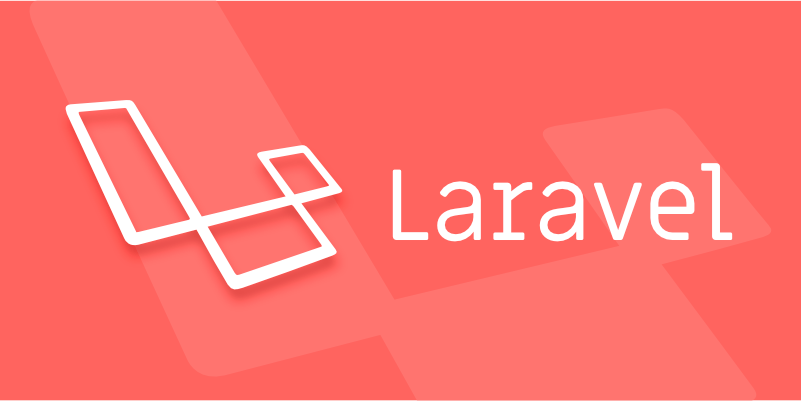Implementing Validation Logic Using Laravel Form Requests
Jul 05, 2025 am 12:06 AMLaravel Form Requests provide a clean and organized way to handle validation. 1. They separate validation logic from controllers, improving code organization. 2. Validation rules are defined in the rules() method of a custom request class. 3. Authorization logic is handled in the authorize() method. 4. Reusability across controllers is enabled by type-hinting the Form Request in controller methods. 5. Laravel automatically returns appropriate error responses, making them ideal for APIs.

When you need to handle form validation in Laravel, using Form Requests is a clean and organized way to keep your controllers slim while encapsulating all the validation logic in one place. It’s especially useful when dealing with complex forms or reusing validation across multiple endpoints.

What Are Laravel Form Requests?
Laravel Form Requests are custom request classes that contain validation rules and authorization logic for handling incoming HTTP requests. Instead of writing validation directly inside your controller methods, you move it into a dedicated class, usually stored in the app/Http/Requests directory.

This approach has several benefits:
- Separation of concerns – Keeps your controllers focused on handling business logic.
- Reusability – You can reuse the same validation logic across multiple controllers.
- Readability – Validation rules are neatly grouped and easy to understand.
To create a Form Request, run:

php artisan make:request StorePostRequest
This will generate a new file under app/Http/Requests/StorePostRequest.php.
How to Define Validation Rules
Inside your Form Request class, you'll find the rules() method. This is where you define your validation logic using Laravel's familiar validation syntax.
For example, let's say you're building a blog and want to validate data before creating a post:
public function rules()
{
return [
'title' => 'required|string|max:255',
'content' => 'required|string',
'category_id' => 'required|exists:categories,id',
];
}A few things to note here:
- Each rule is associated with a form input name.
- You can use array-based rules if needed, like checking multiple values.
- Laravel automatically returns a JSON response with errors if validation fails—perfect for APIs.
Also, you can conditionally apply rules based on the request data. For instance:
'publish_date' => $this->input('is_scheduled') ? 'required|date' : 'nullable',Authorization Logic Inside Form Requests
Form Requests also provide an authorize() method where you can check whether the current user has permission to perform the action.
Here's a basic example:
public function authorize()
{
// Only allow authenticated users to submit this form
return auth()->check();
}If you have more granular permissions, such as only allowing admins to update certain fields, you can do that too:
return $this->user()->can('update-post', Post::find($this->route('id')));Just remember, if authorize() returns false, Laravel will automatically respond with a 403 Forbidden status.
Using Your Form Request in Controllers
Once your Form Request is ready, you simply type-hint it in your controller method:
use App\Http\Requests\StorePostRequest;
public function store(StorePostRequest $request)
{
// At this point, the request has already been validated
Post::create($request->validated());
return redirect()->route('posts.index');
}Because Laravel automatically handles the validation process, you don't need to manually check $request->validate() or deal with error responses.
And if you're working with APIs, the response format will be JSON by default when validation fails, making it ideal for SPA or mobile app backends.
That's how you implement validation logic using Laravel Form Requests. It keeps things clean, reusable, and tightly integrated with Laravel's ecosystem. Not complicated, but definitely powerful once you get used to it.
The above is the detailed content of Implementing Validation Logic Using Laravel Form Requests. For more information, please follow other related articles on the PHP Chinese website!

Hot AI Tools

Undress AI Tool
Undress images for free

Undresser.AI Undress
AI-powered app for creating realistic nude photos

AI Clothes Remover
Online AI tool for removing clothes from photos.

Clothoff.io
AI clothes remover

Video Face Swap
Swap faces in any video effortlessly with our completely free AI face swap tool!

Hot Article

Hot Tools

Notepad++7.3.1
Easy-to-use and free code editor

SublimeText3 Chinese version
Chinese version, very easy to use

Zend Studio 13.0.1
Powerful PHP integrated development environment

Dreamweaver CS6
Visual web development tools

SublimeText3 Mac version
God-level code editing software (SublimeText3)
 Working with pivot tables in Laravel Many-to-Many relationships
Jul 07, 2025 am 01:06 AM
Working with pivot tables in Laravel Many-to-Many relationships
Jul 07, 2025 am 01:06 AM
ToworkeffectivelywithpivottablesinLaravel,firstaccesspivotdatausingwithPivot()orwithTimestamps(),thenupdateentrieswithupdateExistingPivot(),managerelationshipsviadetach()andsync(),andusecustompivotmodelswhenneeded.1.UsewithPivot()toincludespecificcol
 Sending different types of notifications with Laravel
Jul 06, 2025 am 12:52 AM
Sending different types of notifications with Laravel
Jul 06, 2025 am 12:52 AM
Laravelprovidesacleanandflexiblewaytosendnotificationsviamultiplechannelslikeemail,SMS,in-appalerts,andpushnotifications.Youdefinenotificationchannelsinthevia()methodofanotificationclass,andimplementspecificmethodsliketoMail(),toDatabase(),ortoVonage
 Understanding Dependency Injection in Laravel?
Jul 05, 2025 am 02:01 AM
Understanding Dependency Injection in Laravel?
Jul 05, 2025 am 02:01 AM
Dependency injection automatically handles class dependencies through service containers in Laravel without manual new objects. Its core is constructor injection and method injection, such as automatically passing in the Request instance in the controller. Laravel parses dependencies through type prompts and recursively creates the required objects. The binding interface and implementation can be used by the service provider to use the bind method, or singleton to bind a singleton. When using it, you need to ensure type prompts, avoid constructor complications, use context bindings with caution, and understand automatic parsing rules. Mastering these can improve code flexibility and maintenance.
 Strategies for optimizing Laravel application performance
Jul 09, 2025 am 03:00 AM
Strategies for optimizing Laravel application performance
Jul 09, 2025 am 03:00 AM
Laravel performance optimization can improve application efficiency through four core directions. 1. Use the cache mechanism to reduce duplicate queries, store infrequently changing data through Cache::remember() and other methods to reduce database access frequency; 2. Optimize database from the model to query statements, avoid N 1 queries, specifying field queries, adding indexes, paging processing and reading and writing separation, and reduce bottlenecks; 3. Use time-consuming operations such as email sending and file exporting to queue asynchronous processing, use Supervisor to manage workers and set up retry mechanisms; 4. Use middleware and service providers reasonably to avoid complex logic and unnecessary initialization code, and delay loading of services to improve startup efficiency.
 Managing database state for testing in Laravel
Jul 13, 2025 am 03:08 AM
Managing database state for testing in Laravel
Jul 13, 2025 am 03:08 AM
Methods to manage database state in Laravel tests include using RefreshDatabase, selective seeding of data, careful use of transactions, and manual cleaning if necessary. 1. Use RefreshDatabasetrait to automatically migrate the database structure to ensure that each test is based on a clean database; 2. Use specific seeds to fill the necessary data and generate dynamic data in combination with the model factory; 3. Use DatabaseTransactionstrait to roll back the test changes, but pay attention to its limitations; 4. Manually truncate the table or reseed the database when it cannot be automatically cleaned. These methods are flexibly selected according to the type of test and environment to ensure the reliability and efficiency of the test.
 Choosing between Laravel Sanctum and Passport for API authentication
Jul 14, 2025 am 02:35 AM
Choosing between Laravel Sanctum and Passport for API authentication
Jul 14, 2025 am 02:35 AM
LaravelSanctum is suitable for simple, lightweight API certifications such as SPA or mobile applications, while Passport is suitable for scenarios where full OAuth2 functionality is required. 1. Sanctum provides token-based authentication, suitable for first-party clients; 2. Passport supports complex processes such as authorization codes and client credentials, suitable for third-party developers to access; 3. Sanctum installation and configuration are simpler and maintenance costs are low; 4. Passport functions are comprehensive but configuration is complex, suitable for platforms that require fine permission control. When selecting, you should determine whether the OAuth2 feature is required based on the project requirements.
 Implementing Database Transactions in Laravel?
Jul 08, 2025 am 01:02 AM
Implementing Database Transactions in Laravel?
Jul 08, 2025 am 01:02 AM
Laravel simplifies database transaction processing with built-in support. 1. Use the DB::transaction() method to automatically commit or rollback operations to ensure data integrity; 2. Support nested transactions and implement them through savepoints, but it is usually recommended to use a single transaction wrapper to avoid complexity; 3. Provide manual control methods such as beginTransaction(), commit() and rollBack(), suitable for scenarios that require more flexible processing; 4. Best practices include keeping transactions short, only using them when necessary, testing failures, and recording rollback information. Rationally choosing transaction management methods can help improve application reliability and performance.
 Handling HTTP Requests and Responses in Laravel.
Jul 16, 2025 am 03:21 AM
Handling HTTP Requests and Responses in Laravel.
Jul 16, 2025 am 03:21 AM
The core of handling HTTP requests and responses in Laravel is to master the acquisition of request data, response return and file upload. 1. When receiving request data, you can inject the Request instance through type prompts and use input() or magic methods to obtain fields, and combine validate() or form request classes for verification; 2. Return response supports strings, views, JSON, responses with status codes and headers and redirect operations; 3. When processing file uploads, you need to use the file() method and store() to store files. Before uploading, you should verify the file type and size, and the storage path can be saved to the database.






